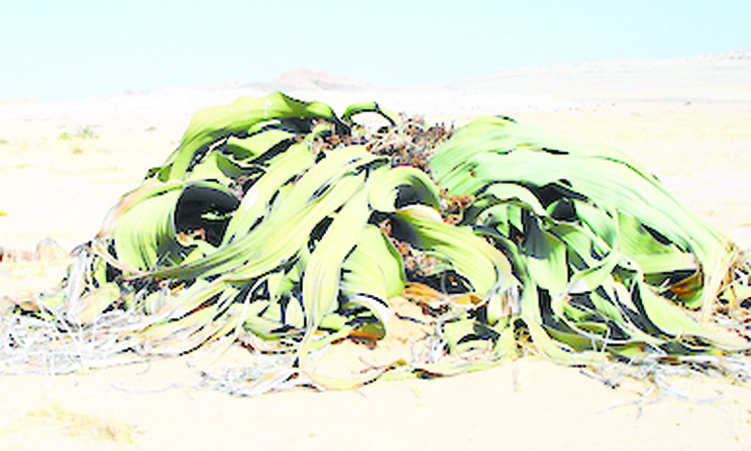The China General Nuclear Power Corporation (CGNPC), Swakop Uranium’s parent company, recently unveiled its 2023 Sustainable Development Report in Paris, underscoring its commitment to ecological conservation.
The company specifically mentioned the successful preservation of hundreds of specimens of Namibia’s national plant, the Welwitschia mirabilis and numerous others, during the construction of the Husab Uranium Mine.
Swakop Uranium’s sustainable development coordinator, Winnie Mukupuki, on Wednesday said this conservation effort is especially important considering the mine operates within the Namib Naukluft National Park.
“It is imperative to preserve Namibia’s natural heritage for future generations,” Mukupuki said.
During the construction phase, the mine received an environmental clearance certificate from the Ministry of Mines and Energy.
As part of the conditions of this certificate, the mine was charged with studying particularly sensitive aspects of biodiversity and implementing long-term monitoring for impact mitigation.
A total of 52 214 individual plants of various varieties were recorded in the area, out of which only 11 were removed for the construction of the second-largest uranium mine in the world.
Among these were welwitschia and camel thorn – some believe to be hundreds, and even possibly a thousand years old.
Construction was said to have taken place some distance from the plants, while only a handful had to be relocated.
This massive task required a dedicated team of environmental consultants and was driven by a biodiversity impact assessment (BIA).
Mukupuki said the plants’ ongoing health and survival are monitored.
The company also intends to educate employees and stakeholders about the importance of these conservation measures.
“We support independent studies and invest in scientific research to understand the complex ecosystem we operate in,” she said.
“We also commit to a symposium dedicated to the Welwitschia mirabilis and research on the restoration of arid and hyper-arid ecosystems.”
Mukupuki said these initiatives align with the CGNPC’s corporate social responsibility strategy.
“We continue to abide by and implement our environmental management plan commitments as we realise our responsibility towards conservation,” she said.
“We are committed to investing enough resources to ensure that this work continues, as our theme for 2023 is ‘Invest in Our Planet’.”
Some experts, however, suggest that the success rate for transplanting succulents is not well proven.
The manager of the Threatened Plants Programme at the National Botanical Research Institute at the Ministry of Environment, Forestry and Tourism, Sonja Loots, says: “Genuine conservation efforts by mining companies are extremely important considering Namibia is a large country with a lot of biodiversity.”
Loots says protecting plants in their original habitat should be the ultimate goal of any development, and transplantation should be a last resort.
“All too often transplantation is used as the preferred alternative, for obvious reasons – the mine goes ahead with destroying the habitat, but keeps its good image because of the conservation efforts they are making,” she says.
All indigenous species in their natural habitat play an important role in their ecosystem, she says. Despite these concerns, corporate contributions to environmental conservation can play a significant role, Loots says.
Stay informed with The Namibian – your source for credible journalism. Get in-depth reporting and opinions for
only N$85 a month. Invest in journalism, invest in democracy –
Subscribe Now!










